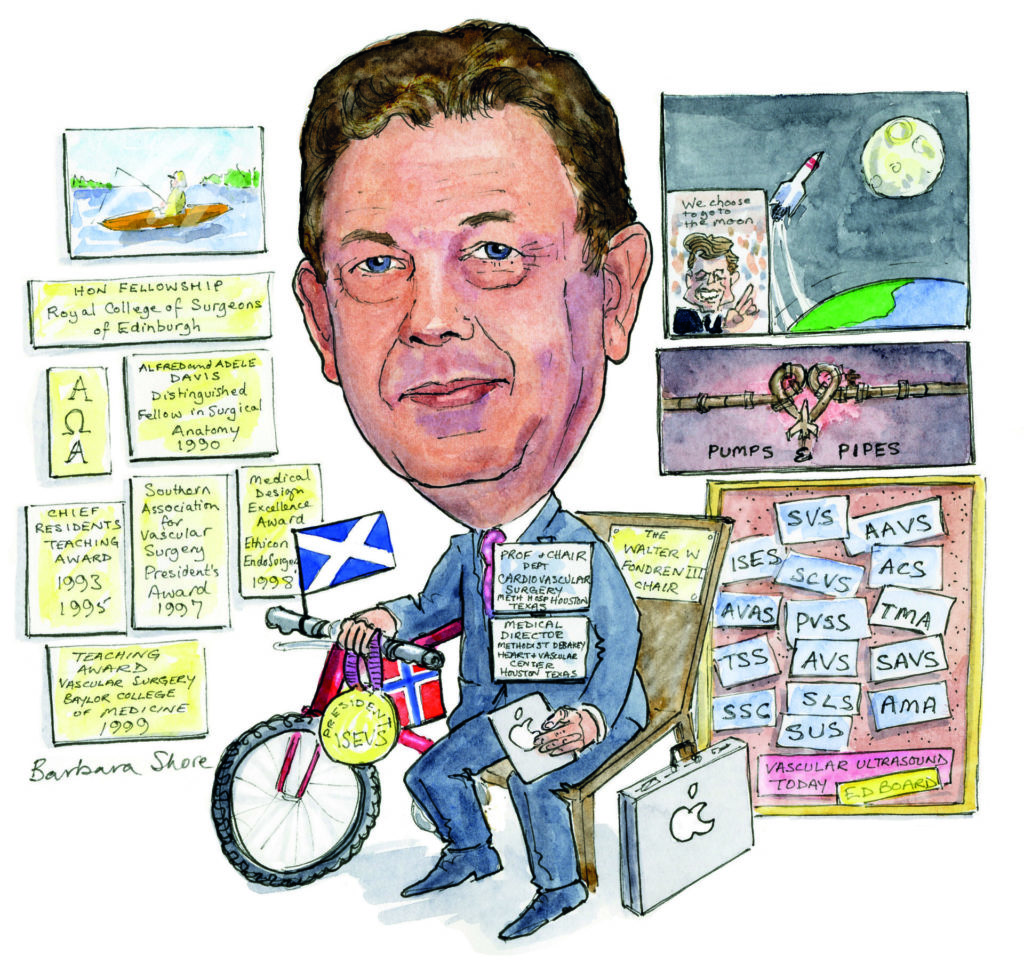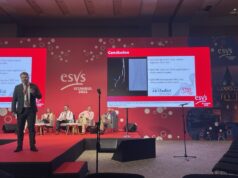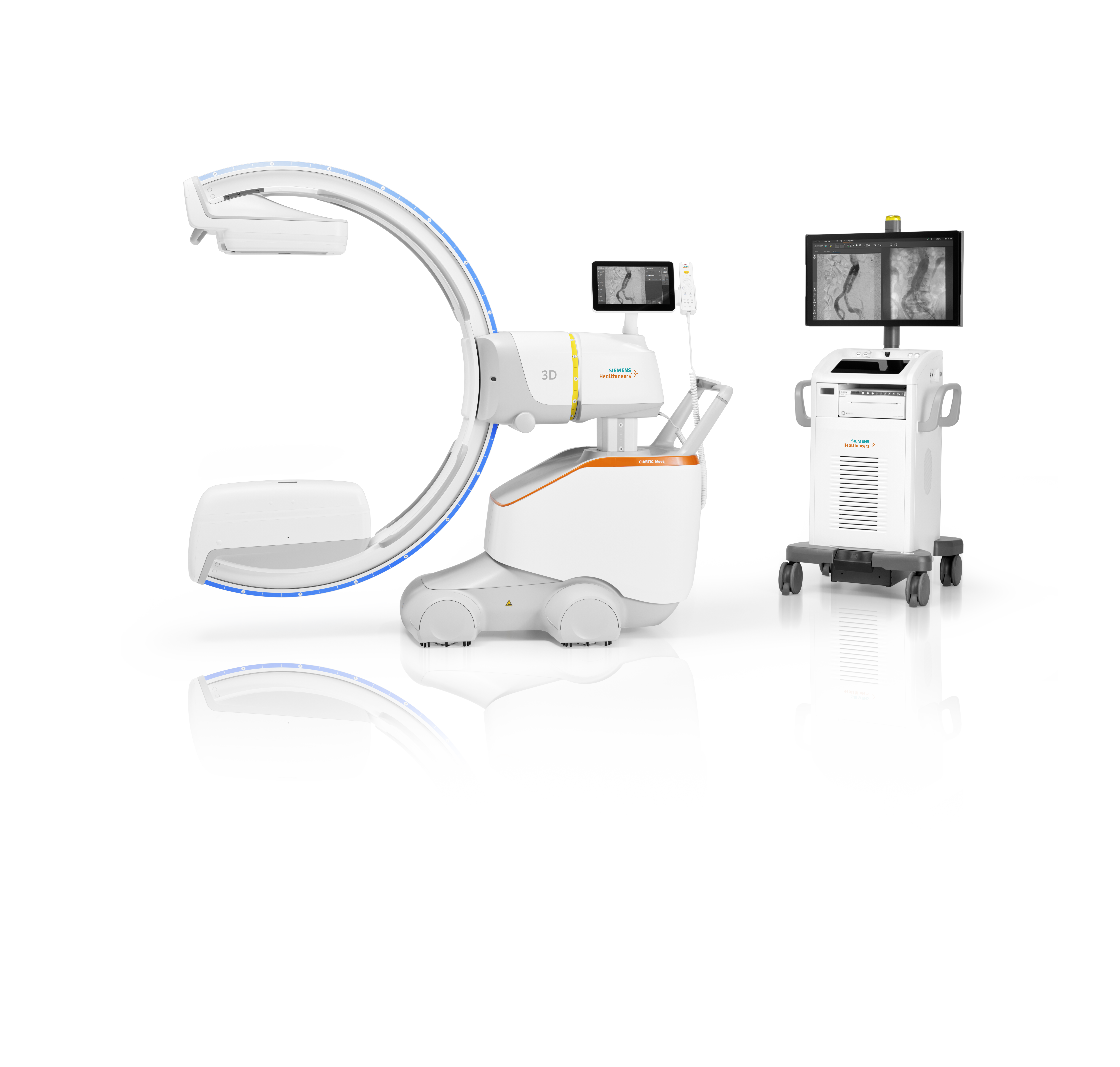
Alan Lumsden is chair of the Department of Cardiovascular Surgery and Medical Director at the Houston Methodist DeBakey Heart and Vascular Center in Houston, USA. He spoke to Vascular News about his current research interests and the three rules of endovascular surgery: imaging, imaging, and more imaging.
What led you to become a vascular surgeon?
When I immigrated from the UK and worked in Grady Memorial Hospital in Atlanta, I was fascinated with trauma—I had never seen a gunshot wound during my training in Edinburgh. First night on call in Grady, two people came in shot. I was thinking, Oh my goodness have I made a big mistake! But you get used to it, and it is the best of training for a young surgeon. The greatest challenges were the major vascular injuries. At that time, I wanted to be a trauma surgeon and that was the reason I did a vascular fellowship. But after you have been doing trauma for five years in residency, you realise that is going to be a tough lifestyle, and I became fascinated by the vascular surgery.
Who have been your professional mentors, and what lessons did you learn from them?
I have been very fortunate to have great people at different stages of my career. As house officer in Sir Patrick Forrest unit in Royal Infirmary of Edinburgh, UK, I worked with a registrar called Mike Dixon. He really started me on the academic route with his passion and drive for research.
I would not be in the USA were it not for Dr Mike Henderson, now at CCF. Mike gave me the break I needed to move to Emory University and work in his lab on portal hypertension. The chairman there was Dr Dean Warren of Warren Shunt fame. Emory was the epicentre of all portal hypertension research. That also got me exposed to the vascular surgery group: Garland Perdue, Bob Smith and Atef Salam. They were all involved in portal hypertension shunt surgery; now that is real surgery! Later, I would join Bob and Atef and subsequently became their chief—now that is a little weird. I never thought I would leave Emory—it is an awesome institution. Then, however, came an invitation to go to Houston: DeBakey, Cooley, Crawford and the biggest vascular surgery training programme in the USA—and guess what? Not one vascular surgeon! No endografts being placed, all big open aortic surgery. That was the opportunity—so I went.
What are the most significant ways you have seen the vascular field develop over the course of your career?
My training included zero endovascular cases. Dr Lou Martin, Emory chief of Interventional Radiology and a great guy, kept saying “Alan, you have to learn how to do this”. But we did not learn, until Dr Steve Oweida, my senior fellow, went to the Arizona Heart Institute and watched what Ted Diethrich was doing. It was absolutely transformational. Ted went to Arizona Heart from Houston Methodist with DeBakey— from the big open surgery centre to developing the endovascular world. Frankly, an unbelievable transition. So how did he do it? Well, they were doing all their own translumbar angiograms between open thoracoabdominal cases. In other words, sticking a needle through the back, injecting dye and pulling a bunch of flat plates behind the patient, hoping you caught something.
So, the main change is in introducing imaging into our operating environment and bringing in the devices. From my perspective, the first, second and third rules of endovascular surgery are: imaging, imaging and more imaging.
How do anticipate the field might change in the next decade, and what developments—technological or otherwise—would you most like to see realised?
Integrating even more imaging—we are building a system with an MRI and a real CT scan in our operating room. Also, catheter robots are transforming the thoracic interventional world—this will come back to us. We created the Methodist Institute for Robotics Imaging and Navigation. It is the interplay of imaging and robotics, which is potentially transformational.
In the last year, which new paper or presentation has caught your attention?
Because of my interest in cerebral embolisation during arch procedures, the paper by Lansky et al published in the Journal of the American College of Cardiology, is a pivotal moment. It defines diffusion-weighted MRI positive lesions as a type 2 stroke. That means 70% of TAVR patients have strokes—ie., areas of dead brain. But it is not just TAVRs; they just happen to be on the front end of this. I think cerebral embolisation is ubiquitous during procedures in left heart, aortic valve and arch. Now we have to reduce this. There are NO good cerebral emboli.
What are your current areas of research and work?
All about integrating imaging into our operative environment. Also focused in transcranial Doppler—this is the only tool which allows us to real time see what is happening in the head as we work downstream.
What advice would you give someone starting their career in vascular surgery?
Take advice but be confident in your ideas. I wasted a lot of time listening to naysayers, about almost everything. I guess it is just part of our DNA. However, remember what John Bergen said about stent grafts: “Never been an advance that has not been opposed by wise and good men”.
In your opinion, what are the biggest challenges currently facing vascular surgeons and specialists?
Easy: preventing loss of open surgical skills. I ran one of the first endografting courses in Atlanta, USA, and now I am running an open aortic training course in Houston. This is going to be a problem.
Could you tell us about one of your most memorable cases?
The ones I remember most are the ones with bad outcomes. As a fellow at Eagleston Children’s Hospital in Atlanta, we operated on an eight-year-old child who had a four wheeler turn over on him, and had a contained rupture at diaphragm, but the child did not look normal. Believe it or not, there was a geneticist available who we asked to consult, almost on way to the operating room. He said this child may have Ehlers Danlos, and advised us to caution the family that he may not survive. We fixed the aorta, took off the shodded clamp, which had almost transected the aorta, and the child died. It was devastating for all, especially the family. I call it the “longest walk”, going from the operating room to a waiting room to deliver news that a family member has died. I never get used to that, and I always say that the day that part of my work no longer bothers me, is the day I retire.
How do you like to spend your time outside of work?
Kayak fishing and cycling with my partner Merrilee— we both love the outdoors and have a house done on Galveston Bay. Other than the occasional hurricane, it is a great place.













